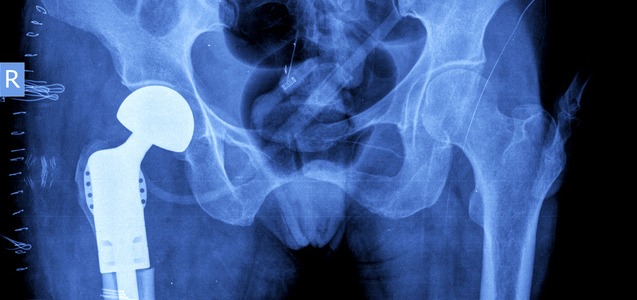The symptoms related to defective metal-on-metal hip implants can be extremely overwhelming for some patients. For many individuals, the device that was supposed to restore their quality of life has instead resulted in pain and immobility. Several of the negative side effects of the metal-on-metal hip implants can be difficult to diagnose. Fortunately, there is now a test available to better monitor and diagnose pseudotumors, a serious condition that often occurs with metal-on-metal hip implants. This test, known as metal artifact reduction sequence magnetic resonance imaging, or MARS MRI, improves on traditional methods used in the past.
Metal-on-metal hip replacements manufactured by companies like Smith & Nephew, DePuy, and Zimmer can cause pseudotumors in some patients implanted with these devices. A pseudotumor is a soft-tissue mass formed when metal particles irritate the tissue around the hip. Symptoms of a pseudotumor can include pain around the hip, swelling around the foot and ankle, joint dislocation, and clicking of the hip implant. In the past, doctors used two methods to detect hip pseudotumors: conventional MRI’s and ultrasound scanning. Both these imaging tests present problems that limit their effectiveness in accurately diagnosing pseudotumors. Conventional MRI’s often obscure soft tissue, making a proper diagnosis by MRI difficult. Diagnosis by ultrasound scanning depends heavily on the interpretation of the doctor reading it, meaning that a pseudotumor can go undiagnosed if the scan is read incorrectly. The MARS MRI provides a solution to these problems.
A MARS MRI’s capacity to produce high resolution images provides an enhanced visualization of the soft tissues surrounding metal-on-metal hip implants. The technology used results in far less image distortion compared to other testing methods. This makes the MARS MRI the most accurate test to detect the formation of a pseudotumor. While a MARS MRI cannot prevent the development of a hip pseudotumor, it can help with early diagnosis and intervention. Knowing that metal on metal hip implants can cause pseudotumors, MARS MRI’s promote better monitoring and represent an important diagnostic tool for patients implanted with these devices. With a more exact image of the tissue around the hip implant, doctors can provide better advice to their patients about the need for a revision surgery.
Manufacturers of metal-on-metal hip implants ignored the serious risks and complications of pseudotumors caused by their defectively designed products. Our experienced lawyers fight for individuals who have been harmed by the negligence of the manufacturers of these dangerous devices. If you or a loved one has been injured or required revision surgery following a metal-on-metal hip implant or other defective hip device, the attorneys at the Yost Legal Group will investigate your potential claim and lawsuit. For a free consultation, please call us at 1-800-YOSTLAW.

